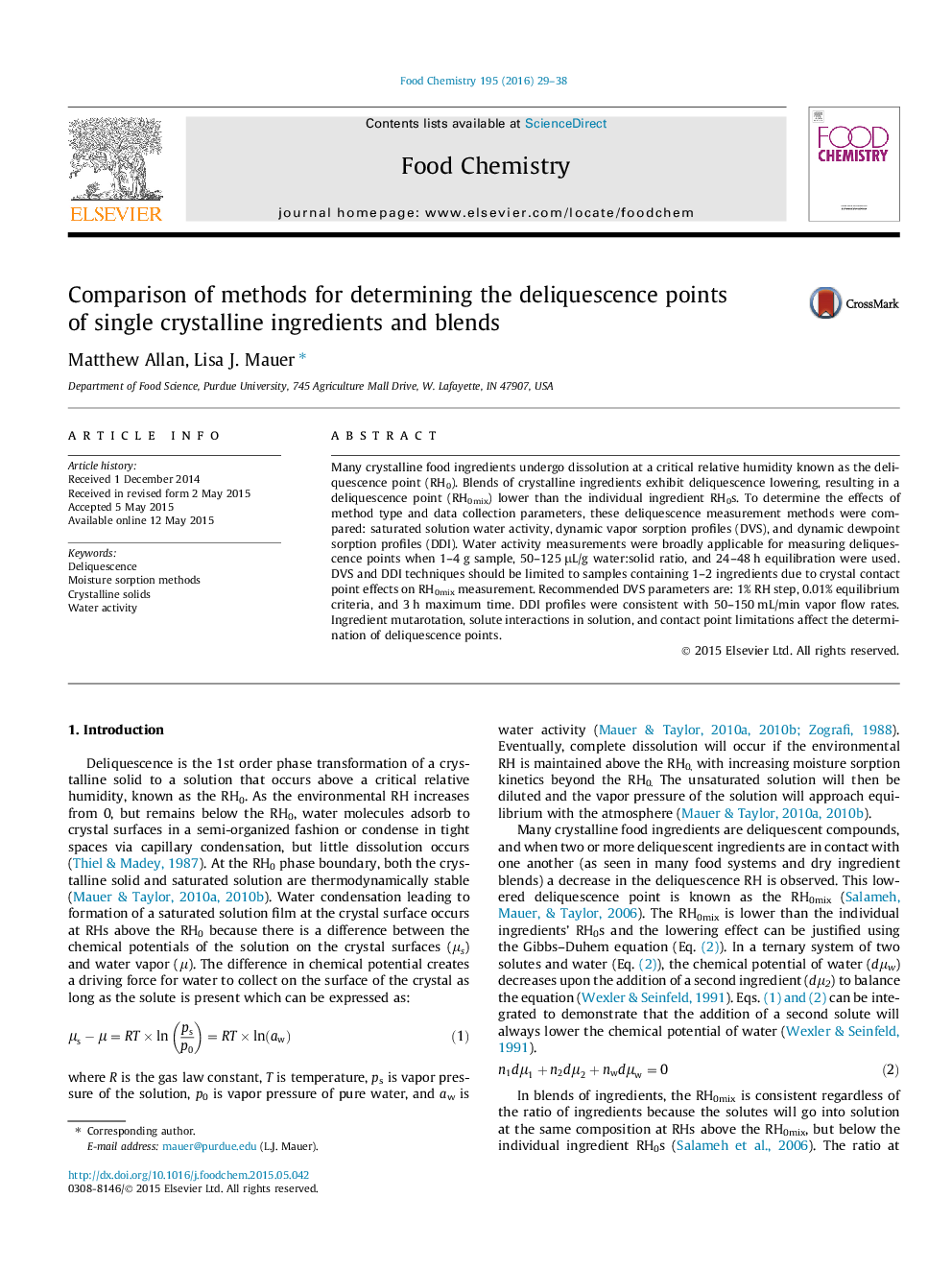| Article ID | Journal | Published Year | Pages | File Type |
|---|---|---|---|---|
| 1184301 | Food Chemistry | 2016 | 10 Pages |
•Compared deliquescence measurement methods and parameters.•Recommended method parameters (aw, DVS, and DDI) for deliquescence.•Contact points influence ternary blend RH0mix DVS and DDI measurements.•Drop in aw upon dissolution of sugars that undergo mutarotation.
Many crystalline food ingredients undergo dissolution at a critical relative humidity known as the deliquescence point (RH0). Blends of crystalline ingredients exhibit deliquescence lowering, resulting in a deliquescence point (RH0mix) lower than the individual ingredient RH0s. To determine the effects of method type and data collection parameters, these deliquescence measurement methods were compared: saturated solution water activity, dynamic vapor sorption profiles (DVS), and dynamic dewpoint sorption profiles (DDI). Water activity measurements were broadly applicable for measuring deliquescence points when 1–4 g sample, 50–125 μL/g water:solid ratio, and 24–48 h equilibration were used. DVS and DDI techniques should be limited to samples containing 1–2 ingredients due to crystal contact point effects on RH0mix measurement. Recommended DVS parameters are: 1% RH step, 0.01% equilibrium criteria, and 3 h maximum time. DDI profiles were consistent with 50–150 mL/min vapor flow rates. Ingredient mutarotation, solute interactions in solution, and contact point limitations affect the determination of deliquescence points.
